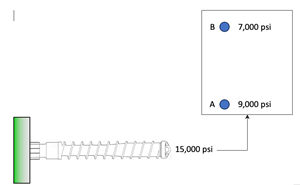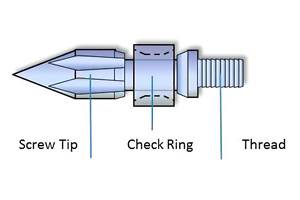A New Plant Is a Blank Slate
The nice thing about a start-up is that you get to start from scratch.
The nice thing about a start-up is that you get to start from scratch. At least that was the case for Robert Wright, hired to be general manager of Legacy Molding Corp., which opened its doors 15 months ago in Riverton, Wyo. He had 19 years' experience in injection molding automotive accessories, consumer products, and medical, electronic, and ┤¾¤¾┤½├¢ machine parts. But at brand-new Legacy Molding, he had the opportunity to design not only ┤¾¤¾┤½├¢ strategy, but every detail of the operation's physical layout.
Legacy was created by Star Tech Corp., a small, family-run firm that makes rollers for exercise treadmills. The firm had been buying custom-molded nylon end caps for its metal rollers, but owners Chuck and Thelma Starks believed they could make them better and cheaper by setting up their own molding operation next door.
They were proved right. Now Rob Wright is starting to build Legacy into a custom molding ┤¾¤¾┤½├¢ that will serve not only local makers of outdoor gear and computer printers but also the nearby Denver and Salt Lake market areas. To compete with established molders, Wright is counting on the lower operating costs in the state of Wyoming and on creating a reputation for quality and precision. That goal is evident in his plant design.
Clean and tidy
Besides tight quality control, a clean plant environment will appeal to medical and electronics customers, Wright believes. Both are reasons why one of his first two machines is an all-electric model, and he plans to buy nothing but electric presses in the future, despite their higher price tags. Electric machines are cleaner and more precise than hydraulic machines, Wright says. They also will cut his energy costs, he believes, and they helped him to save money by downsizing his cooling-tower needs, as well.
Though starting with just two presses of 100 and 200 tons, Wright's floor plan envisions two rows of five machines in the 12,000-sq-ft space. Between each row of machines and the plant wall is room for an aisle to transport materials and parts. Clutter is avoided by combining all electrical, water, air, and materials-transfer piping in a vertical cluster beside each press station. The support structures are already in place at the eight press stations that are now vacant.
Each service cluster has air and water shutoffs. To free up space, the electrical transformer is mounted near the ceiling. Granulators and other auxiliary equipment are mounted on rollers to facilitate mold changes and clean-up of the molding area.
In another space-saving arrangement, pump tanks for the water tower are mounted on a platform against the end wall of the plant, right above the air compressors. Wright's plant also doesn't have any stacks of bags or boxes of materials lying around. His resin distributor delivers daily on a just-in-time basis.
Fully networked
Despite its small size, Legacy Molding makes extensive use of electronic information systems. The molding machines communicate real-time production data via wireless link to a network that reaches all company managers. The ERP system lets operators swipe their ID cards to clock in and out for payroll purposes. They also swipe a barcode reader to clock hours devoted to a particular job.
An unusual feature of the plant is a PC terminal at each press. Operators use it to enter scrap data for later analysis by company managers. Each time the operator measures a part for routine QC, he or she clicks open an SPC program that contains the entire history of that job in one file.
The PC also is loaded with a training video for the current job on the press. It contains precise instructions—e.g., "Start by verifying the part number, which is …." An operator can refer to it whenever he or she wants. "It saves training time," Wright notes.
Related Content
What to Look for in High-Speed Automation for Pipette Production
Automation is a must-have for molders of pipettes. Make sure your supplier provides assurances of throughput and output, manpower utilization, floor space consumption and payback period.
Read MoreUsing Data to Pinpoint Cosmetic Defect Causes in Injection Molded Parts
Taking a step back and identifying the root cause of a cosmetic flaw can help molders focus on what corrective actions need to be taken.
Read MoreUnderstanding the Effect of Pressure Losses on Injection Molded Parts
The compressibility of plastics as a class of materials means the pressure punched into the machine control and the pressure the melt experiences at the end of fill within the mold will be very different. What does this difference mean for process consistency and part quality?
Read MoreGot Streaks or Black Specs? Here’s How to Find and Fix Them
Determining the source of streaking or contamination in your molded parts is a critical step in perfecting your purging procedures ultimately saving you time and money.
Read MoreRead Next
Making the Circular Economy a Reality
Driven by brand owner demands and new worldwide legislation, the entire supply chain is working toward the shift to circularity, with some evidence the circular economy has already begun.
Read MoreLead the Conversation, Change the Conversation
Coverage of single-use plastics can be both misleading and demoralizing. Here are 10 tips for changing the perception of the plastics industry at your company and in your community.
Read MoreFor PLASTICS' CEO Seaholm, NPE to Shine Light on Sustainability Successes
With advocacy, communication and sustainability as three main pillars, Seaholm leads a trade association to NPE that ‘is more active today than we have ever been.’
Read More












